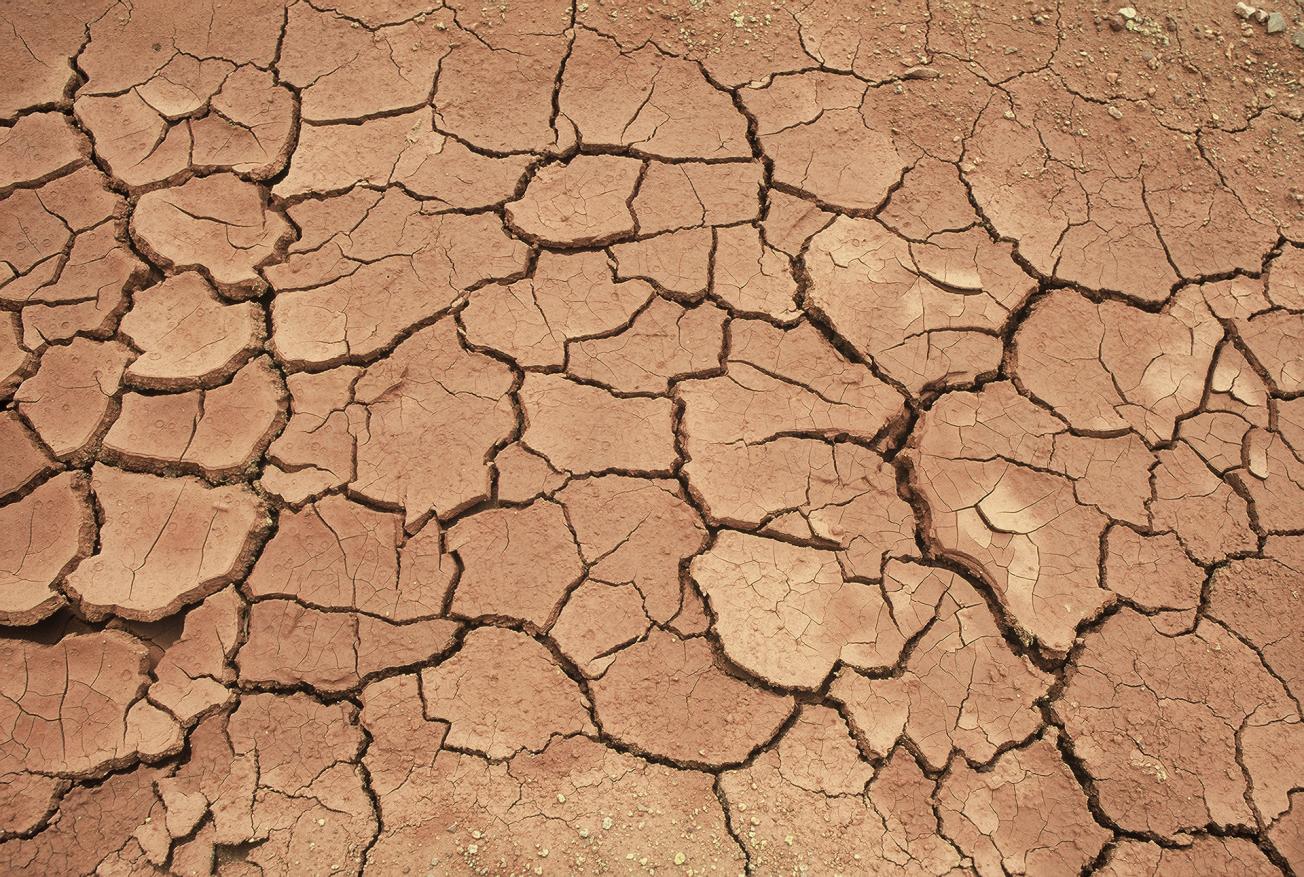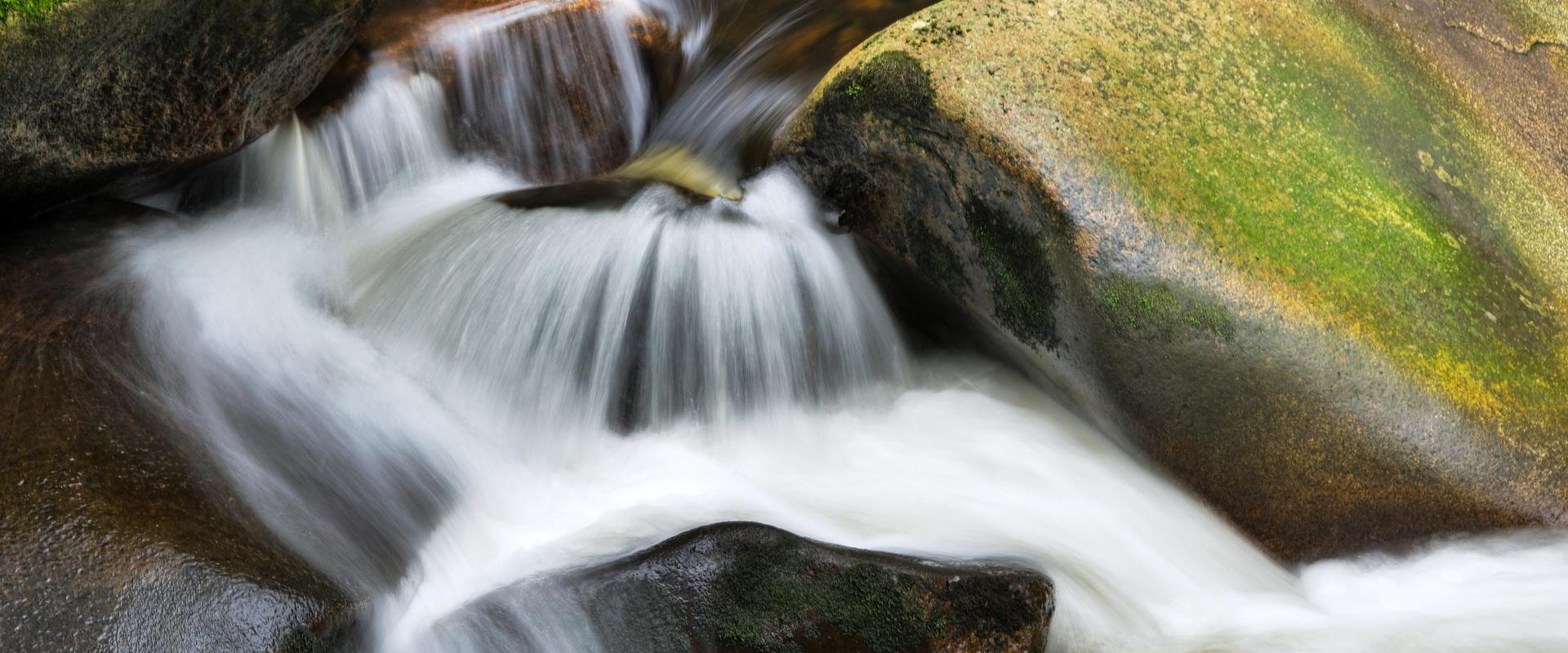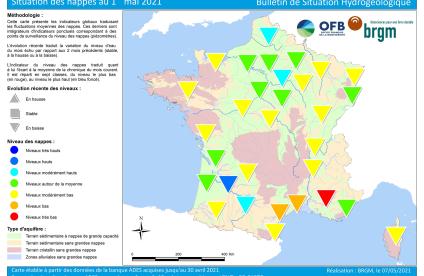
Parched-earth cracks at Villeveyrac (Hérault, France, 1997).
© BRGM - François Michel
The water flowing below our feet, deep in the rock interstices and cracks is invisible to us. And yet, it is this groundwater (named “aquifers”) that prevents streams, rivers and marshes from drying out during dry summers. Let us not forget that groundwater provides 65% of our drinking water.
In France, will May rains help counter summer droughts?
While the month of May has been particularly cool and humid, with abundant rainfall, will that be sufficient to recharge the aquifers? The answer is: not really. At the end of May, the levels of the aquifers are mostly lower than for April. The water having entered the ground following May rains has mainly dampened the ground, to the benefit of the local vegetation.
Three hot and dry months lie ahead of us
Admittedly, these May rains have had some positive local effects in areas where there was much rain, such as in the Auvergne-Rhônes-Alpes and the Provence-Côte-d’Azur regions, but only in the so called “reactive” aquifers, in other words, those where the groundwater flow is swift, such as the Rhone alluvial and the Jura limestone karsts in Provence. But these increases are temporary and the water level becomes stable again, or even drops when the rainfall is insufficient to compensate their depletion.
Understanding how rainfall reaches groundwater
In order to understand these complex phenomena - especially why a large amount of rain does not always recharge the aquifers - it is important to know how the water arrives from the surface to the aquifer. In France, only 20 to 23% of the mean yearly rainfall manages to reach greater depths. The aquifers mainly get recharged during autumn and winter. In spring and in summer, the conditions are such that rain water is prevented from reaching greater depths and recharging the aquifers.
The roles of the sun and runoff
Many factors, such as the amount of rain and its intensity, the vegetation cover, the biological activity and constructions due to human activity can affect the ground’s ability to absorb water.
Ground and vegetation retention
The capillary forces of particles in the ground can retain water. As such, it is changed into humidity, thus greatly impeding its mobility. The retention capacity of the ground depends on its texture and its porosity.
A part of this trapped water may be released to plants. The water is absorbed by the roots and redirected towards stems and leaves. It is then evaporated into the atmosphere by transpiration. This evapotranspiration uses up almost all of the trapped water when vegetation is active - generally between April and October-November.
The gravity-induced flow maze
The ground has to be saturated in order to allow a gravity-induced flow towards deeper layers. This excess, which is neither held back by the ground nor absorbed by plants, can finally trickle down deeper. During spring and summer, hardly any water infiltrates deeper, apart from cases of exceptionally intense rainfall.
The water does not go down vertically, but rather takes circuitous pathways through rock to reach the aquifers. The true distance it flows depends on the rock porosity, i.e., the interconnected spaces within the rock. The flow rate can be very slow if the water goes through poorly-connected pores or swift if it flows through cracks or karst formations.







